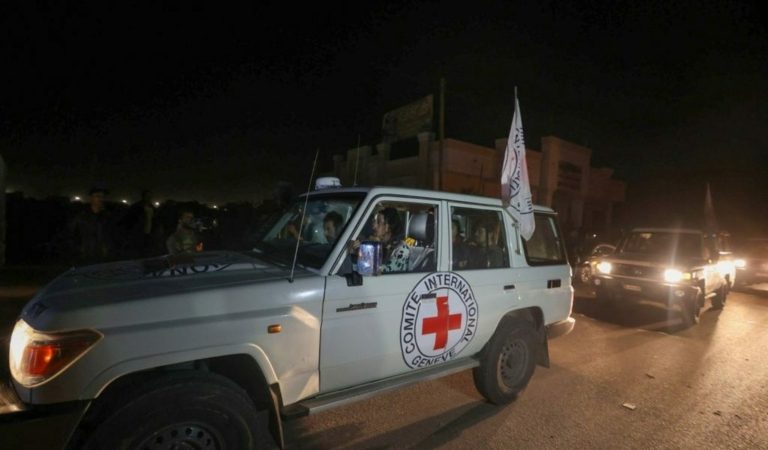Cairo Hosts Negotiations on Ceasefire Deal in Gaza Sector, with the presence of all parties and mediators on Wednesday, May 8, 2024, following Hamas’ approval of the “latest proposal”, prompting Tel Aviv to send its delegation to Cairo.
According to Cairo’s private news channel quoting a high-level unnamed source, “(Negotiations) will continue between all parties in Cairo on Wednesday.”
The channel stated, “Gaza ceasefire talks are held with the presence of delegations from Doha, Washington, and Hamas, in addition to the Egyptian security delegation.”
Hamas stated on Monday that it accepted the conditions of the ceasefire proposed by Arab mediators, while U.S. officials said there were minor changes in the wording from the proposal presented by Israel and the United States to the movement recently.
However, Israeli officials doubted this description, as Prime Minister Benjamin Netanyahu said on Tuesday that the Security Cabinet unanimously believes that the proposal Hamas agreed to was “far from Israel’s basic demands.”
The United States believes that the remaining disagreements between Israel and Hamas can be overcome in negotiations regarding the latest ceasefire proposal, but what are the main sticking points still hindering the agreement?
Definition of “Sustainable Quietness”

According to the American newspaper “The New York Times”, the primary and most important sticking point between Israel and Hamas lies in defining the key phrase appearing in the proposals agreed upon by Israel and Hamas, which is the path to “sustainable quietness”.
In the proposal agreed upon by Israel, relayed by Egypt to Hamas on April 26, it stated: “Both sides will work to achieve sustainable quietness in Gaza after an initial cessation of hostilities for six weeks.”
However, in the proposal agreed upon by Hamas after slight amendments made following discussions in Cairo for two days with the presence of CIA Director William Burns, “sustainable quietness” was clearly defined as a permanent cessation of hostile acts and a complete withdrawal of Israeli forces from the Gaza Strip.
Israel consistently opposes any agreement explicitly calling for a permanent ceasefire or an end to the war at the moment.
According to Ehud Yaari, a fellow at the Washington Institute for Near East Policy, the timeline of the exchange deal will require Israel to end the war while Hamas still holds hostages, leaving Israel with no leverage.
Release of Hostages
The second contentious point lies in the details of the prisoner exchange deal between Hamas and the occupation. According to the terms of the proposal agreed upon by Hamas, the agreement extends over three stages, each lasting three weeks. In the first stage, the occupation releases hundreds of Palestinian prisoners and detainees from Israeli prisons in exchange for 33 Israeli prisoners, including female soldiers, elderly men, and the sick and wounded.
However, Hamas informed negotiators on Monday that all 33 individuals to be released in the first stage are deceased, and the remains of those who have died will be among those released, a revelation that surprised the Israelis.
Additionally, Hamas proposed a framework that would extend the period of prisoner releases by releasing three individuals on the third day after the ceasefire begins, then releasing another three every seven days thereafter. A previous proposal called for the release of three prisoners every three days.
Analysts suggest that extending the period of releases would mean that negotiations for the second stage of the deal would occur while Hamas holds more bargaining chips.
According to the newspaper, Hamas’ agreed-upon proposal cancels any Israeli right to refuse the release of Palestinian prisoners serving life sentences, and the occupation has a list of 200 prisoners they refuse to release.
Attack on Rafah
The attack on Rafah has become another hurdle in the agreement, as the Israeli government seeks to portray its ground operation in Rafah as a means to pressure the movement to ease its negotiating stance.
Hamas described the Israeli operation as a “dangerous escalation” aimed at “disrupting mediation efforts to achieve a ceasefire and release the prisoners.”
Osama Hamdan, a Hamas leader, stated, “There will be no ceasefire if the Israeli aggression in Rafah continues.”
Hamdan considered the Qatari-Egyptian proposed ceasefire text “which we agreed upon as representing the minimum demands of our people and resistance.”
On Tuesday morning, the Israeli army took control of the Palestinian side of the Rafah border crossing between Gaza and Egypt, the main passage for humanitarian aid, leading to its closure in both directions.
American Optimism Despite Everything
Despite all this, White House spokesman John F. Kirby said, “There should be no reason they can’t overcome those remaining gaps.”
Kirby said Tuesday evening that Hamas had presented a modified proposal and that the new text indicates that the remaining gaps can be “completely bridged.” He refrained from providing details about the conditions.
With the mediation of Qatar, Egypt, and the United States, Palestinian factions in Gaza and Israel have been conducting indirect negotiations for months to reach an agreement to exchange prisoners and halt the war on Gaza, which erupted on October 7, 2023.
Since the only ceasefire in the conflict so far, which lasted for a week in November, efforts to halt the ceasefire have faltered, with Hamas refusing to release more Israeli prisoners without a commitment to a permanent ceasefire and Israel insisting on negotiating only a temporary ceasefire.
The Israeli war on Gaza, now entering its eighth month, has left around 113,000 dead and wounded, most of them children and women, prompting Tel Aviv to face trial before the International Court of Justice on charges of “genocide.”
Sunna Files Free Newsletter - اشترك في جريدتنا المجانية
Stay updated with our latest reports, news, designs, and more by subscribing to our newsletter! Delivered straight to your inbox twice a month, our newsletter keeps you in the loop with the most important updates from our website












